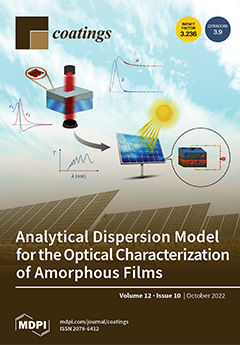For oil-in-water (O/W) Pickering emulsions, a new polymer stabilizer of butyl acrylate (BA) grafted cellulose nanocrystals (BA-
g-CNC
S) has been developed. By adjusting the BA concentration, the hydrophilic and hydrophobic surfaces of BA-
g-CNCs could be systematically modified based
[...] Read more.
For oil-in-water (O/W) Pickering emulsions, a new polymer stabilizer of butyl acrylate (BA) grafted cellulose nanocrystals (BA-
g-CNC
S) has been developed. By adjusting the BA concentration, the hydrophilic and hydrophobic surfaces of BA-
g-CNCs could be systematically modified based on the controllable interface activity. Specifically, the emulsification stability of the as-prepared stabilizer was examined as a function of BA content, BA-
g-CNC
S usage, and oil type. The results showed that the Pickering emulsion stabilized by BA-
g-CNC
S had a 98% volume fraction of emulsion with long-term stability. Importantly, BA-
g-CNC
S could be a promising choice for polymer stabilizers and could generate high internal phase Pickering emulsions without cross-linking when combined with 13% BA and 1.75% BA-
g-CNC
S. Furthermore, it was established that BA-
g-CNCs possessed self-emulsifying quality, worked as hydrophobic coatings, and improved the mechanical properties. This was of fundamental interest to polymer stabilizer and functional coatings, allowing for promising applications in coating fields such as fabrics, leather, paper, controlled encapsulation, and the release of actives in material science.
Full article





